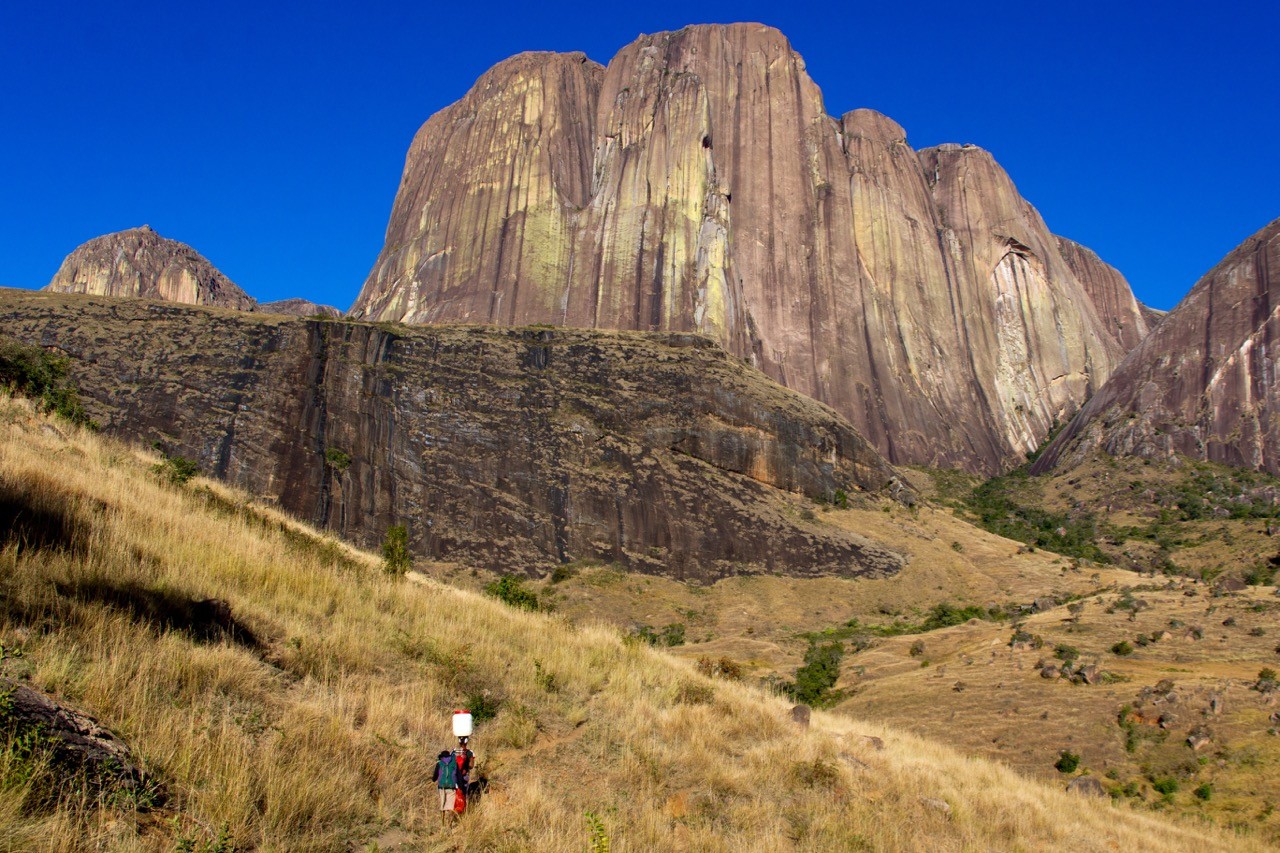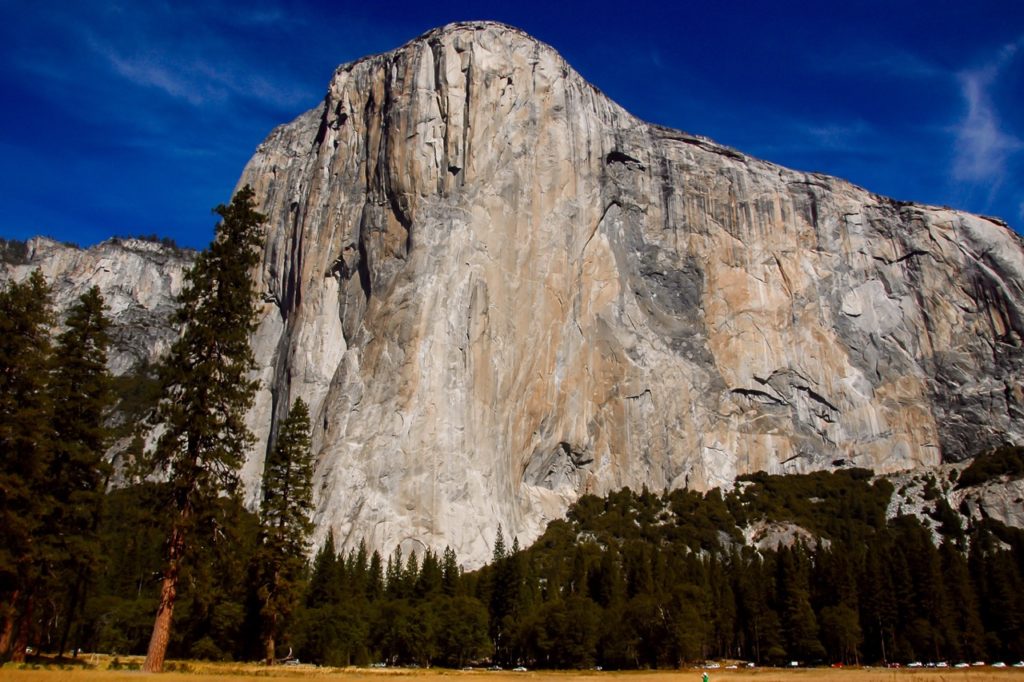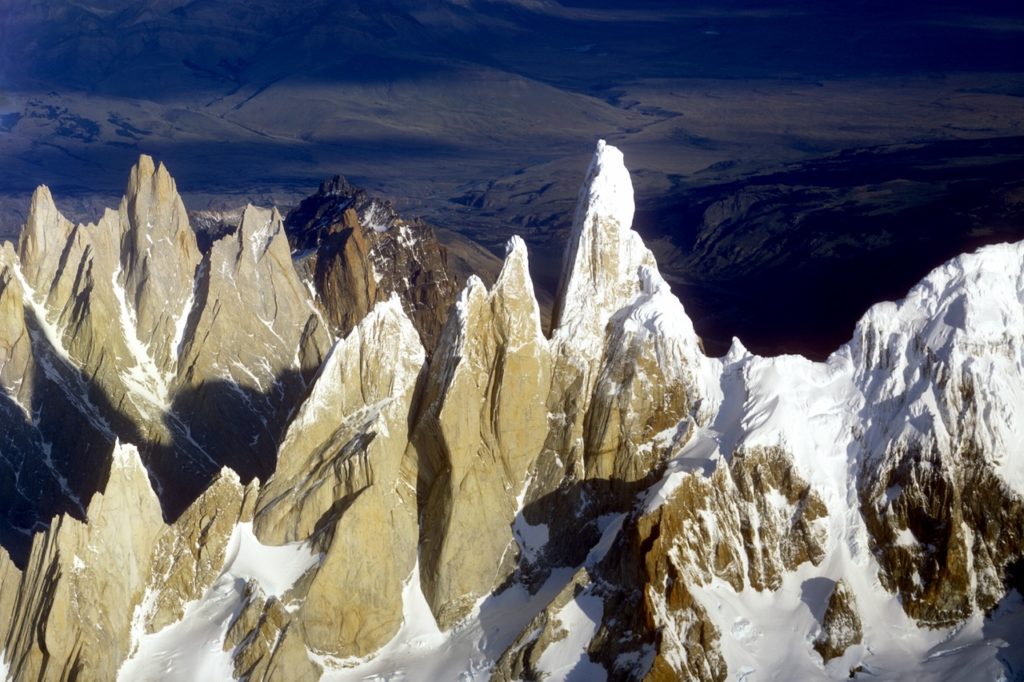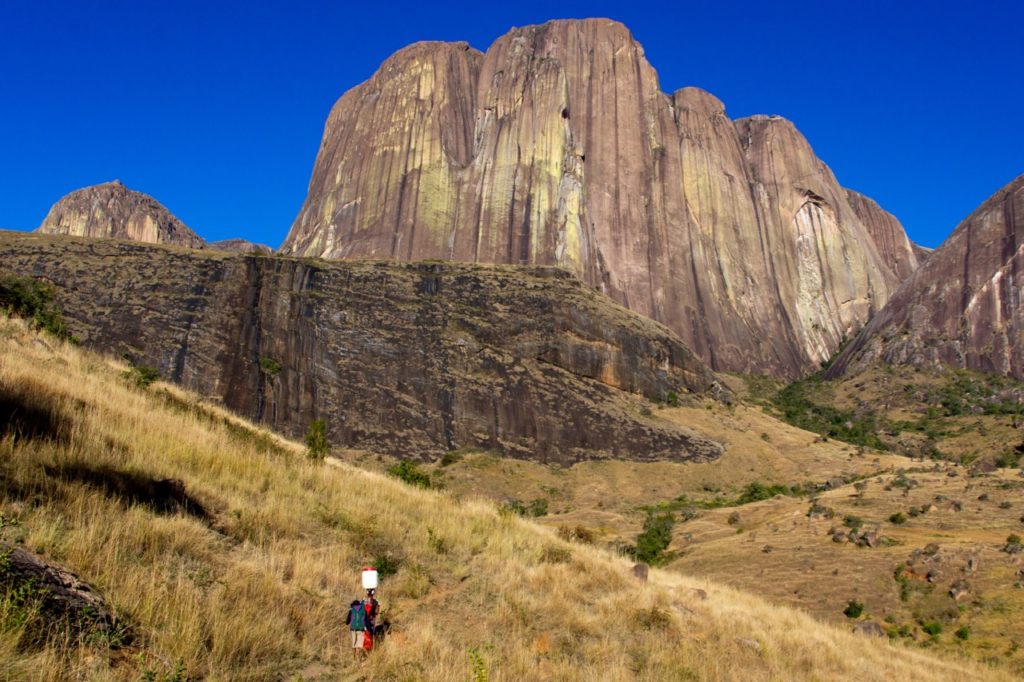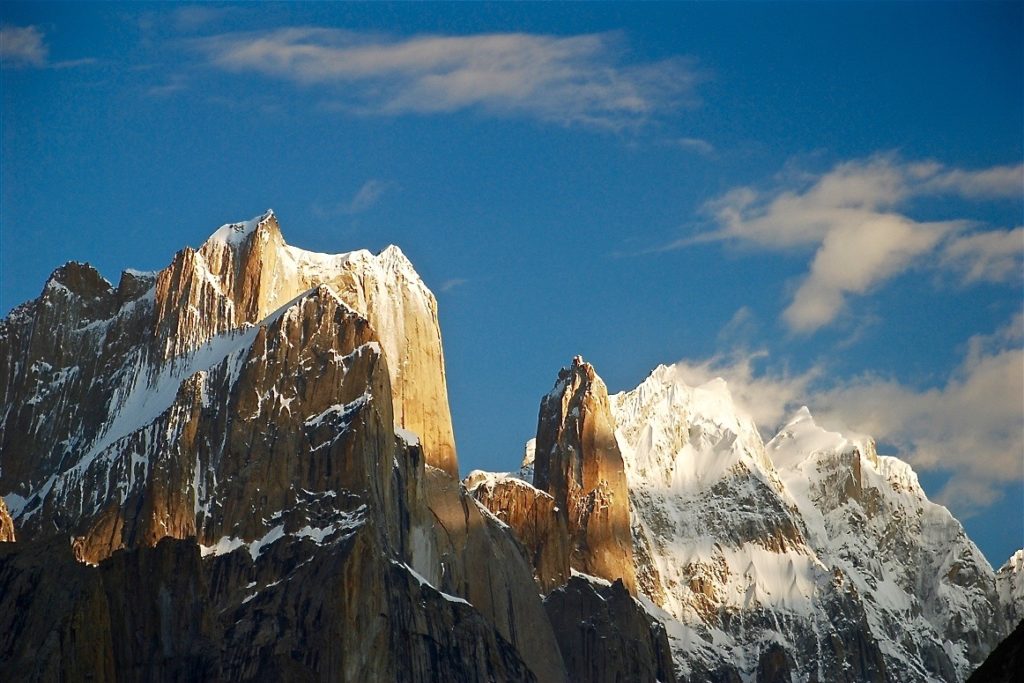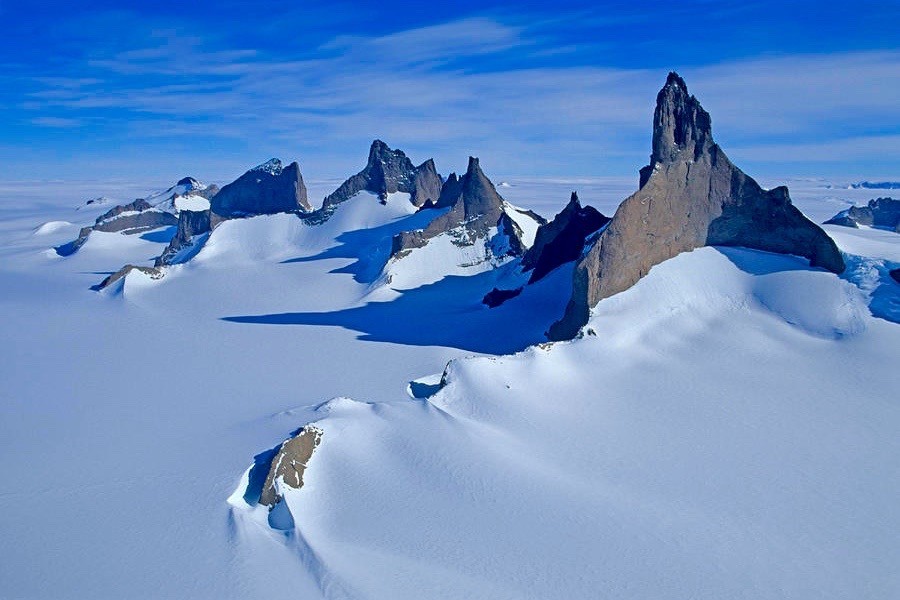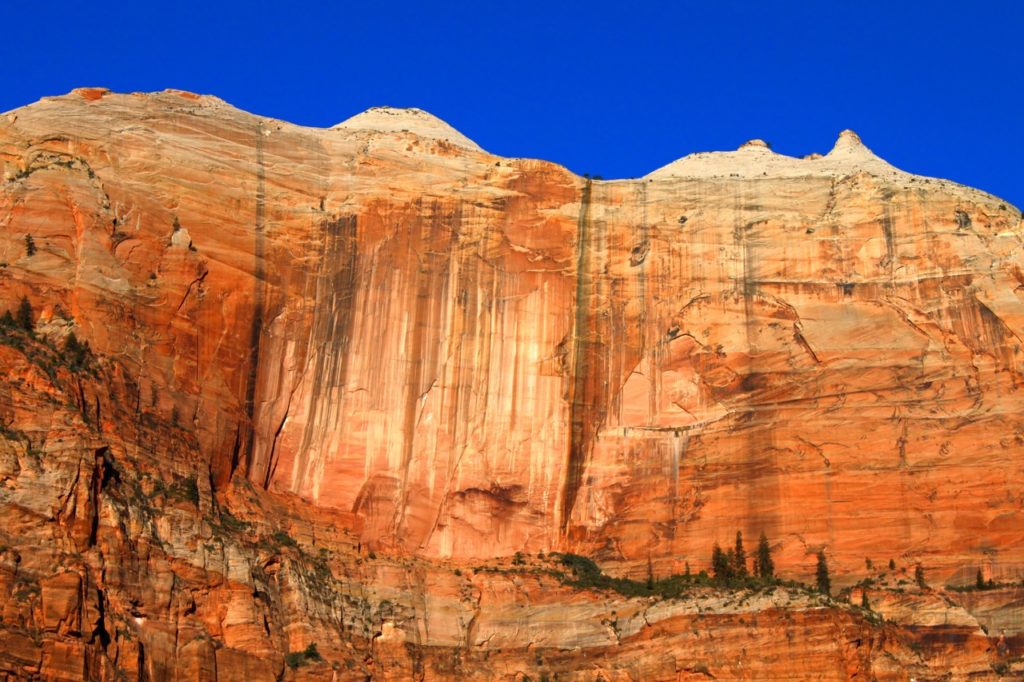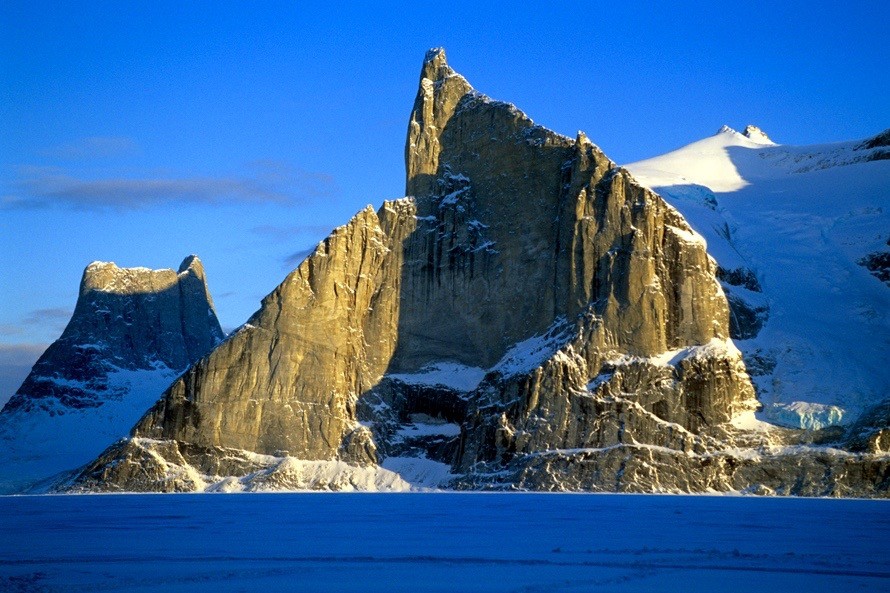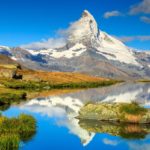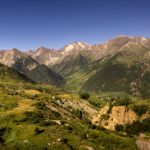From El Capitan in Yosemite to remote challenges in Greenland and Antarctica, we profile the world’s most stunning big wall climbs
It was five years ago that I first came across a big wall climber. A tiny speck on the side of a gigantic granite wall, the climber was bivvying in Yosemite National Park, the Holy Land of big wall climbing.
I couldn’t comprehend how someone could sleep tacked onto the side of a wall, suspended thousands of feet above the ground, sometimes in treacherous weather conditions.
I was reminded of this special breed of climber by the film Meru which follows three world-class climbers in their efforts to scale the mountain’s imposing Shark’s Fin. The high-altitude climbing on display is impressive but it’s the big wall climbing on the near-featureless Shark’s Fin that is really mind-blowing.
What is big wall climbing?
A big wall climb is an extended rock climbing route that usually requires multiple pitches to ascend and takes experienced rock climbers more than a single day to ascend. Big wall routes often require the climber to bivvy on the route overnight often using a portaledge and a hauling system.
It’s tricky to nail down an actual height, as the difficulty and technicality of the route can affect how long the climb takes. However, a route is usually classified as a big wall climb when it takes around six to 10 pitches to complete. This roughly translates as between 300m (984ft) to 500m (1,640ft) as a minimum height.
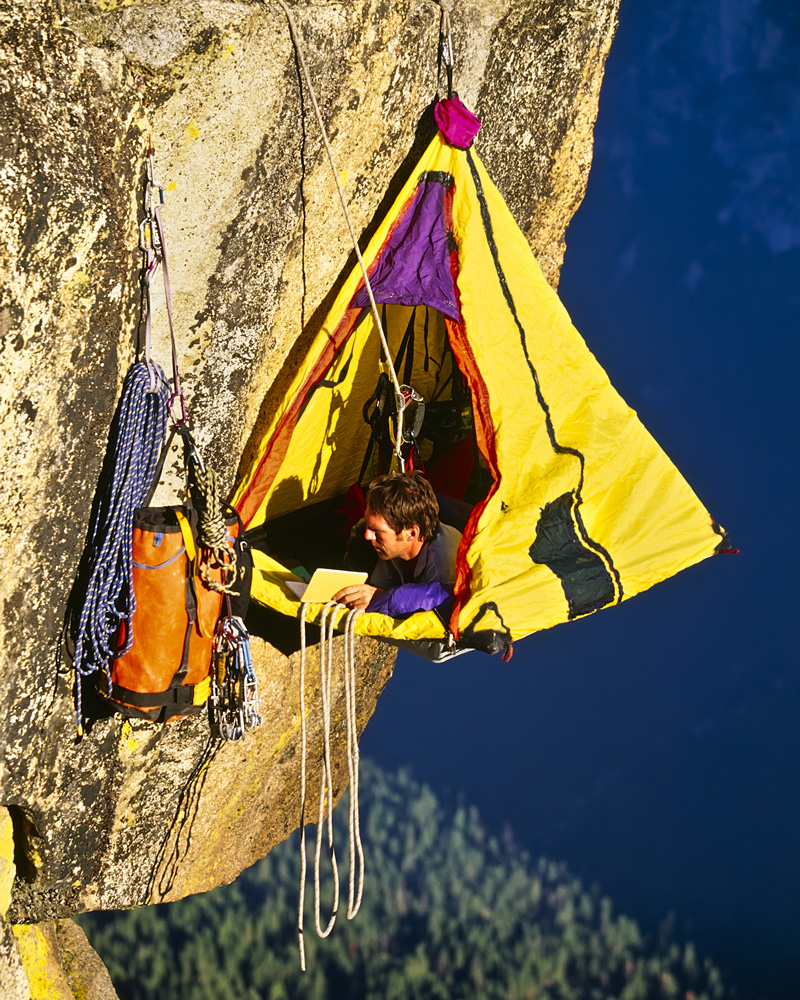
What all big wall climbs have in common is that they are technically challenging and require a significant amount of logistical planning and preparation. No one just rocks up (pun intended) to a big wall and climbs it. The route will need to be carefully researched, technical and personal gear methodically prepped and a substantial amount of training time put in. You’ll also need to be comfortable using a poop tube.
World’s most stunning big wall climbs
Below, we take a closer look at the Shark’s Fin and other stunning big wall climbs across the world.
Note: Wall height versus total mountain height is ambiguous in some cases. We have used the most accurate reading available.
1. El Capitan, California, USA
Height: 900m (2,950ft)
Elevation: 2,307m (7,570ft)
First ascent: 1958, Wayne Merry, George Whitmore, Warren Harding
We couldn’t write a piece about big wall climbing without mentioning El Capitan in Yosemite National Park. Rising a massive 900m from its base, the wall was first climbed in 1958 and took a total of 47 days to complete.
Since then, hundreds of new routes have been established and speed climbing has become popular, the record for which belongs to the preternatural Alex Honnold and Hans Florine who completed the climb in 2hr 33m on 17th June 2012.
2. Half Dome, California, USA
Height: 609m (2,000ft)
Elevation: 2,694m (8,840ft)
First ascent: 1957, Royal Robbins, Mike Sherrick, Jerry Gallwas (northwest face)
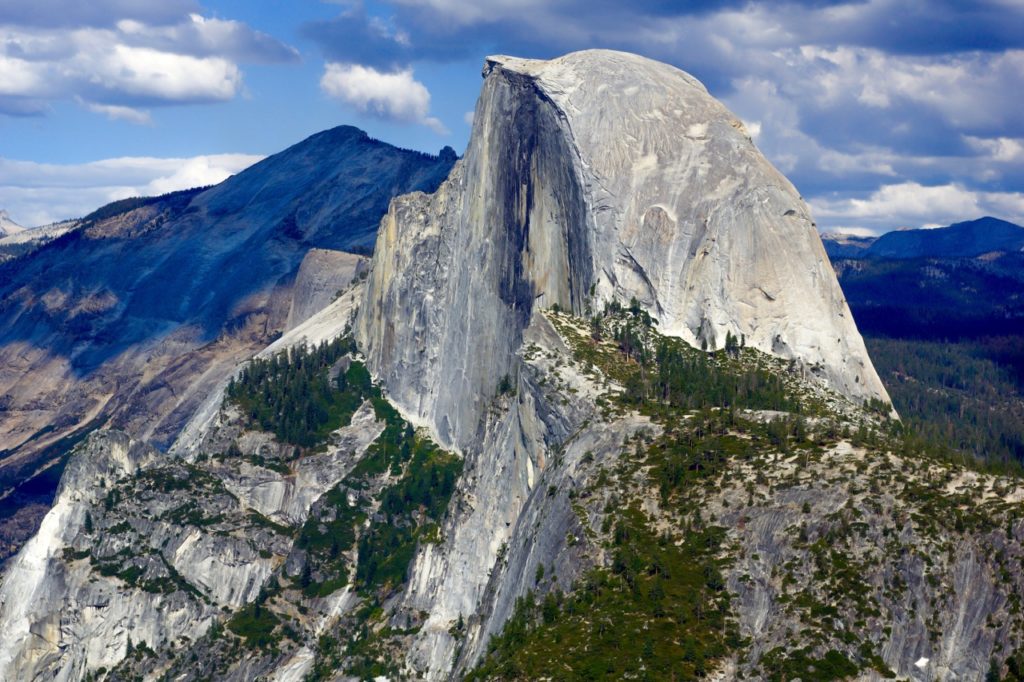
Half Dome is Yosemite’s other famous big wall. The first technical ascent was in 1957 via a route known today as the Regular Northwest Face. The ascent – which took five days – was the first Grade VI climb in the US.
Today, the route has now been free-soloed several times in a few hours. The fastest ascent was completed in 1hr 22m by Alex Honnold in May 2012.
3. CERRo TORRE, Patagonia, Argentina
Height: 1,227m (4,025ft)
Elevation: 3,128m (10,260ft)
First ascent: 1959, Cesare Maestri (disputed); 1974, Daniele Chiappa, Mario Conti, Casimiro Ferrari, Pino Negri (undisputed)
With dizzying steepness, violent weather and an unclear line of ascent, Cerro Torre was long deemed ‘unclimbable’. Then, in 1959, Italian Alpinist Cesare Maestri claimed that he and Austrian ice climber Toni Egger made the first ascent of the deadly spire. Egger perished on the mountain but Maestri lived to tell the tale.
At first, the feat was hailed one of the greatest ascents of all time… and then came the doubts. Subsequent climbs and closer interrogation have cast heavy doubts on Maestri’s claims. Despite demands to the opposite, Maestri has doggedly maintained his version of events.
4. Tsaranoro Massif, Madagascar
Height: 400m (1,310ft)
Elevation: 800m (2,625ft)
First ascent: 1995, Kurt Albert, Berndt Arnold
Madagascar may be famous for its wildlife but it has more to offer than lemurs. Dubbed Africa’s Yosemite, Tsaranoro Massif features orange-streaked granite walls that have drawn climbers since the late 90s.
The majority of the walls can be tackled in a day but the Tough Enough route is considered one of the hardest multi-pitch routes in the world.
5. Trango Towers, Pakistan
Height: 1,300m (4,395ft)
Elevation: 6,286m (20,625ft)
First ascent: 1977, Galen Rowell, John Roskelley, Kim Schmitz, Dennis Hennek
The Trango Towers in northern Pakistan are among the world’s most beautiful mountains. They have also seen some of the most difficult big wall climbs in history due to the combination of altitude, height and steepness. In fact, the east face of Great Trango Tower is the world’s greatest ‘nearly vertical’ drop at 1,340m.
In 2013, Polish climbers Marek Raganowicz and Marcin Tomaszewski completed a new 46-pitch route. It took them a mind-scrambling 20 days.
6. SHARK’s FIN, Meru PEAK, India
Height: 457m (1,500ft) – after 4,000ft of technical climbing
Elevation: 6,660m (21,850ft)
First ascent: 2011, Conrad Anker, Jimmy Chin, Renan Ozturk
In 2008, world-class climbers Jimmy Chin, Conrad Anker, and Renan Ozturk set out to scale the then-unclimbed granite wall of the Shark’s Fin. After 20 days in extreme conditions, they gave up a gut-wrenching 100 meters from the summit.
Three years later, having forgotten the pain, they set out to try again. Meru is the story of that second attempt.
7. UlVeTanna, Antarctica
Height: 1,750m (5,740ft)
Elevation: 2,931m (9,615ft)
First ascent: 1994, Robert Caspersen, Sjur Nesheim, Ivar Tollefsen
Ulvetanna is one of the world’s most captivating big walls. Tolkienesque in appearance, it rises crown-like from a landscape of white desert.
It was first climbed in 1994 with its north-east ridge conquered almost two decades later by Brit Leo Houlding and his team.
It should be noted that while big wall climbing is best done with bare hands, this is simply not an option at -25º C!
8. Le Petit Dru, France
Height: 850m (2,790ft)
Elevation: 3,733m (12,250ft)
First ascent: 1879, Jean Charlet-Straton, Prosper Payot, Frederic Folliguet
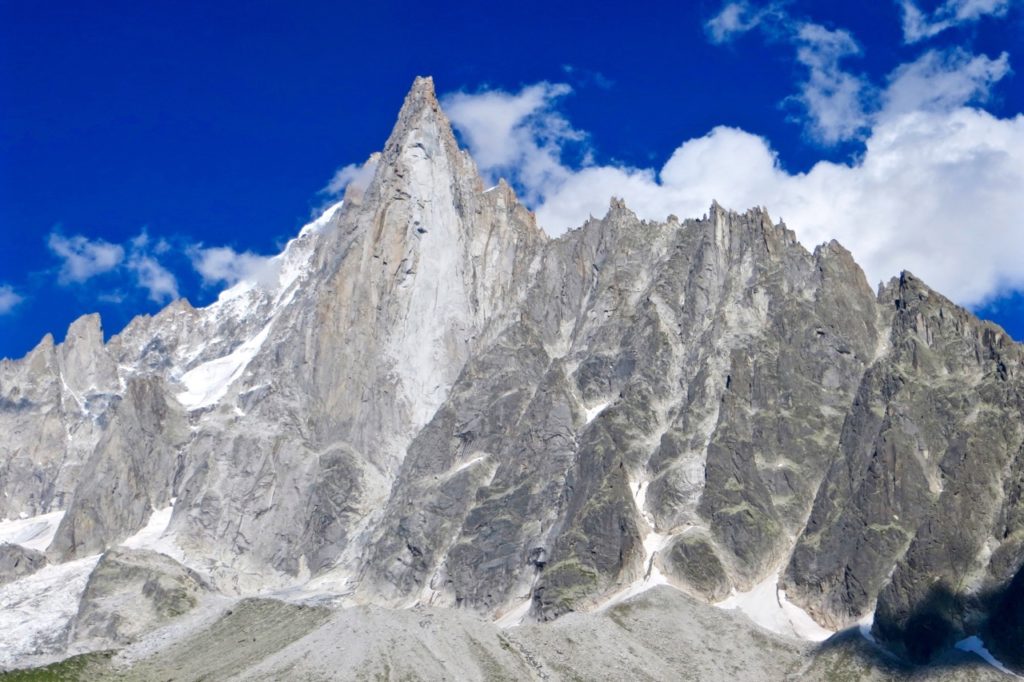
Climbing in Chamonix may seem relatively civilised but don’t be fooled: Le Petit Dru is a seriously risky undertaking.
In 2005, one of its classic lines, the Bonatti Pillar, crumbled away entirely in a massive rock fall and there have been several rockfalls since.
9. Naranjo De Bulnes, Spain
Height: 500m (1,640ft)
Elevation: 2,519m (8,265ft)
First ascent: 1904, Pedro Pidal
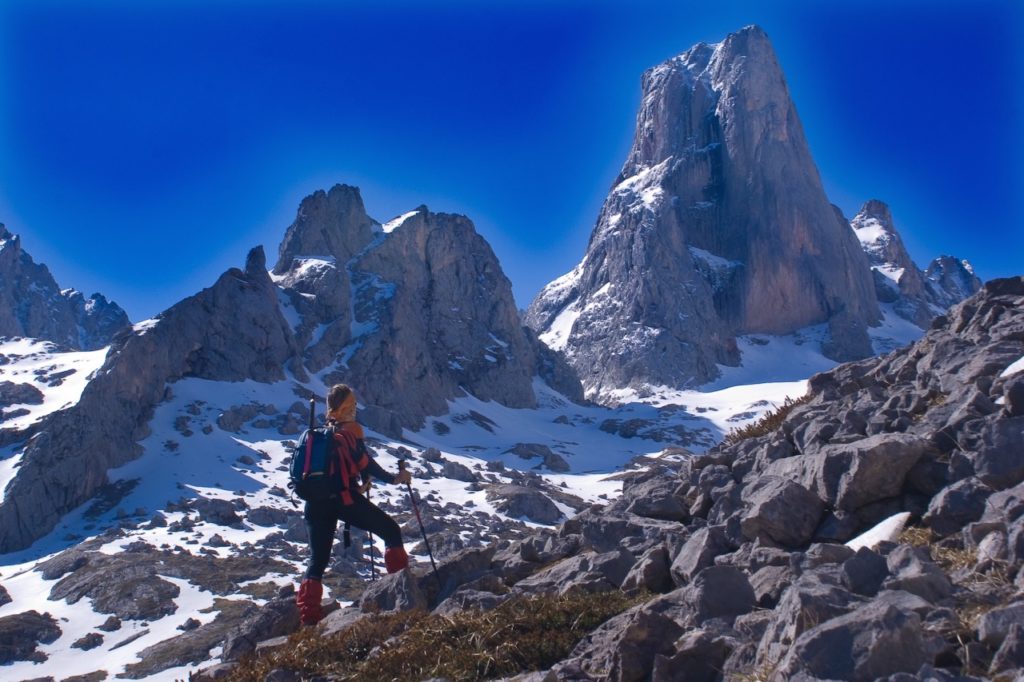
Naranjo de Bulnes is a limestone peak in northwest Spain, widely revered by Spaniards as their mountaineering jewel.
In August 2009, Spanish brothers Eneko and Iker Pou made the first free ascent of the fiercely challenging 13-pitch route, Orbayu. The route ranks as one of the hardest multi-pitch climbs in the world and was no easy feat for the brothers.
10. TRollveggen, Norway
Height: 1,100m (3,610ft)
Elevation: 1,700m (5,580ft)
First ascent: 1965, Ole Daniel Enersen, Leif Norman Patterson, Odd Eliassen, Jon Teigland
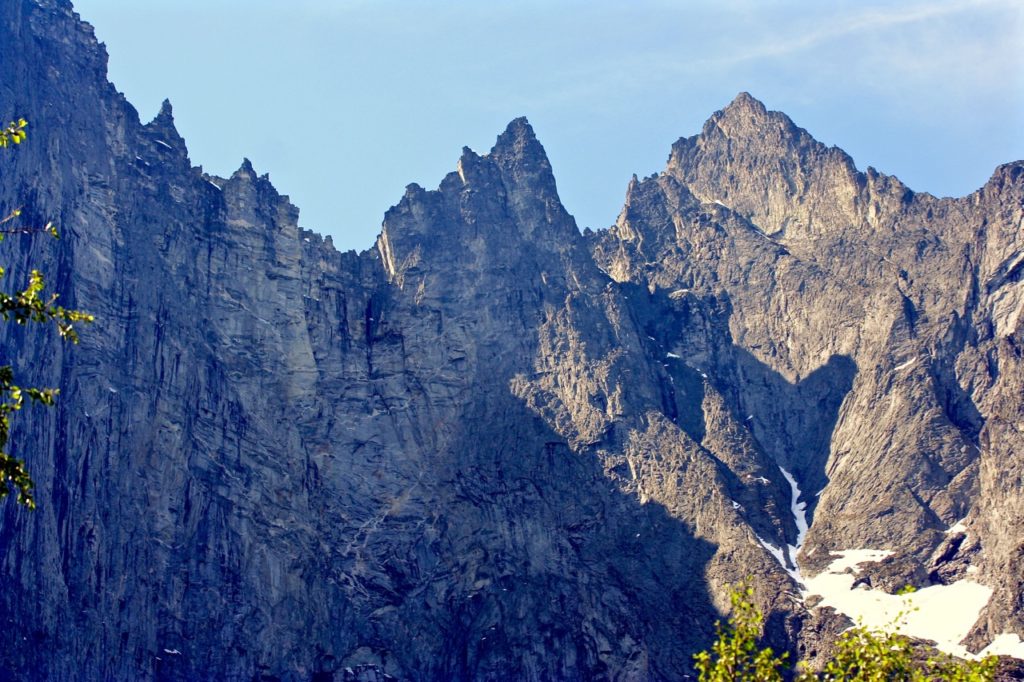
Trollveggen, or Troll Wall, is the tallest vertical rock face in Europe. At its steepest point, the wall overhangs the base by nearly 50m. What’s more, the wall faces north, exposing climbers to extreme weather and temperatures.
In 1986, base jumping from the top was made illegal after the death of Carl Boenish, ‘the father of base jumping’.
11. CERRO Autana, Venezuela
Height: 610m (2,000ft)
Elevation: 1,220m (4,000ft)
First ascent: 1974, Stephen Platt, David Nott, Wilmur Perez, Carlos Reyes
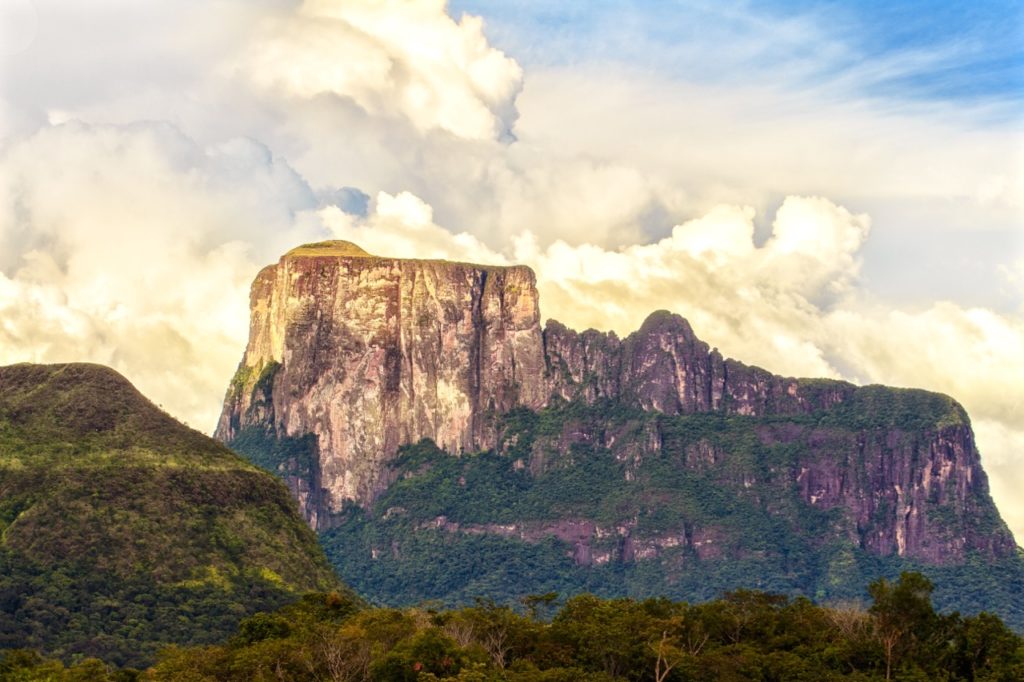
Cerro Autana is known not only for its near-vertical walls but also its number of caves – rare in rocks other than limestones. The caves are the result of the dissolution of cemented sandstone which leaves large empty spaces. In Cerro Autana, these form interconnected caverns and a ‘lounge’ with a domed ceiling.
The first ascent took three days and the party spent four days mapping the caves before descending by abseil.
12. Streaked Wall, UTAH, USA
Height: 400m (1,312ft)
Elevation: 1,457m (4,780ft)
First ascent: 1990, Dave Webster, Rick Nelson, Jeff Mayhew
Referred to as ‘Zion’s fiercest wall’, this big wall in Zion National Park is a sight to behold. It is severely overhanging and requires total commitment: once you leave the ground, retreat is not an option.
Unfortunately, the sandstone in Zion is fragile and easily damaged when wet. Climbers are therefore advised to refrain from climbing in rainfall or shortly after to preserve existing routes.
13. Notch Peak, UTAH, USA
Height: 670m (2,200ft)
Elevation: 2,943m (9,655ft)
First ascent: 1986, Thomas Koch, Peter Diener
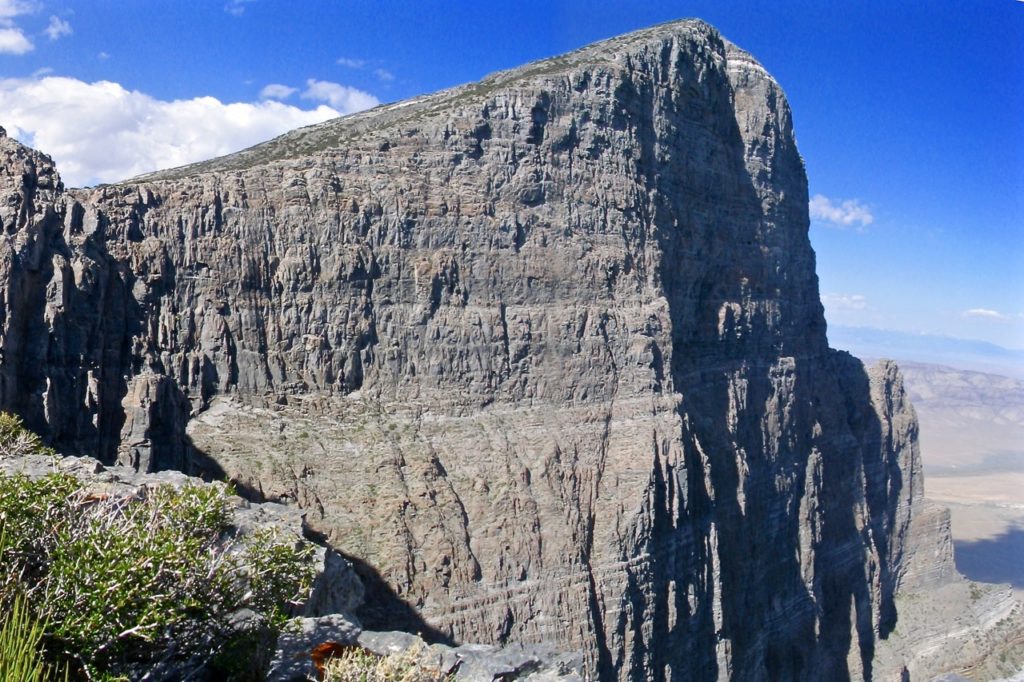
Notch Peak in Utah is the second-highest pure vertical drop in the USA (second to El Capitan). Its northwest face has a vertical rise of 670m and is home to several thoroughly challenging routes made even more difficult by regular rockfall.
14. Mt Asgard, Baffin Island, Canada
Height: 1,200m (3,940ft)
Elevation: 2,015m (6,610ft)
First ascent: 1953, J. Weber, J. Marmet, H. Röthlisberger
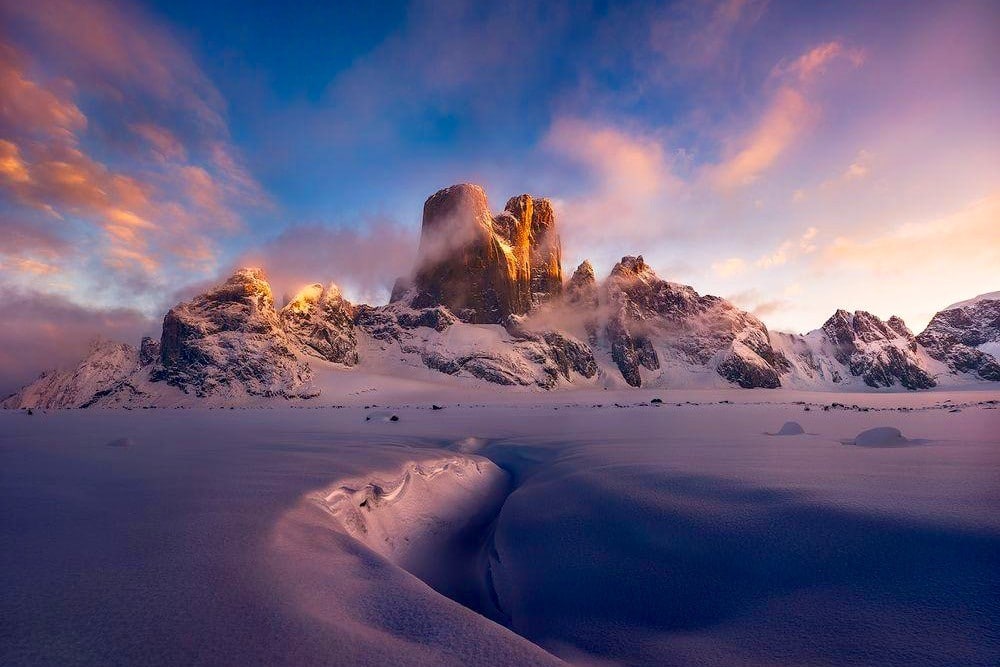
The name says it all. The twin peaks of Mt Asgard in Canada are indeed otherworldly in both size and stature.
In 1976, stuntman Rick Sylvester skied off the mountain with a Union Flag parachute for the opening sequence of the James Bond film The Spy Who Loved Me.
In 2009, British climber Leo Houlding and his team made a bid for the first free ascent of the north face, a story told in the award-winning Alastair Lee film, the Asgard Project. In homage to its history, Houlding then BASE jumped off from the summit. As you do.
15. Mt Thor, Baffin Island, Canada
Height: 1,250m (4,100ft)
Elevation: 1,675m (5,495ft)
First ascent: 1965, Donald Morton and Lyman Spitzer
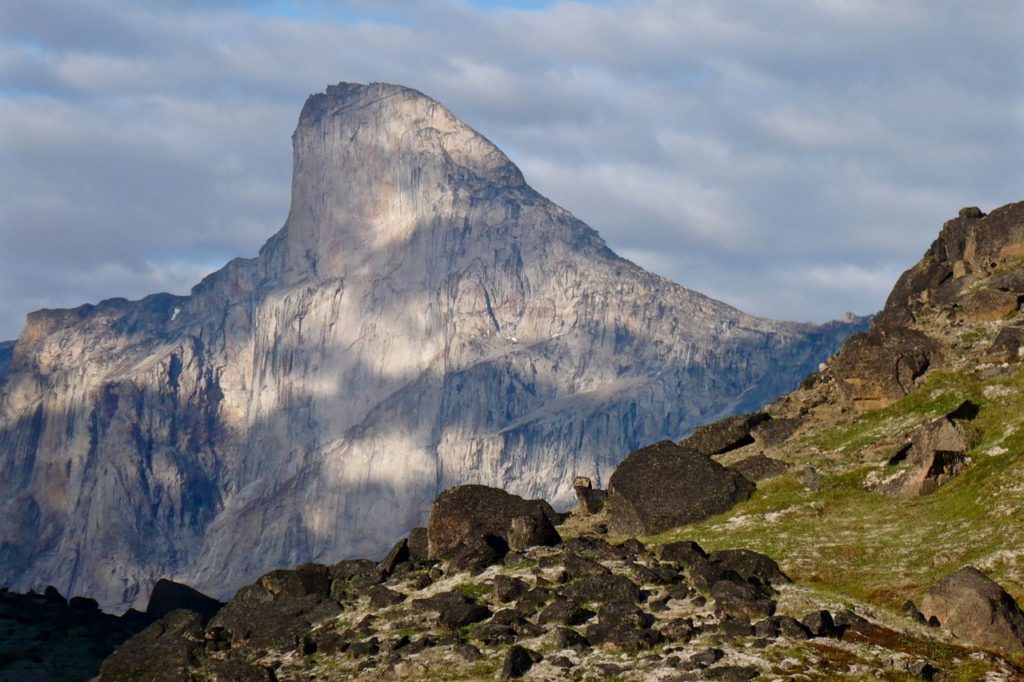
As mentioned in most extreme places on Earth, Thor Peak has the world’s greatest vertical drop at 1,250m. To give you an idea of Thor’s size, the Shard in London is 306m high, the Eiffel Tower is 324m, the Empire State Building is 443m and the Burj Khalifa (the tallest building in the world) is 829m high – all tiny compared to this beast.
Notably, it would take a terrifying 36 seconds for a 170 lb (77kg) person to fall the 1,250m from the cliff face 400 metres below the summit of Mount Thor.
16. EL SENDERO LUMINOSO, Mexico
Height: 533m (1,750ft)
Elevation: 548m (1,800ft)
First ascent: 1994, Jeff Jackson, Pete Peacock, Kurt Smith
Another string in Alex Honnold’s bow, El Sendero Luminoso in Mexico was climbed by the virtuoso in just three hours – a feat usually attempted in two days or more.
The wall sits amid El Potrero Chico, an internationally renowned rock climbing area comprising a unique geological formation of limestone cliffs and spires.
17. Stawamus Chief, Squamish, Canada
Height: 417m (1,368ft)
Elevation: 702m (2,303ft)
First ascent: 1961, Ed Cooper, Jim Baldwin
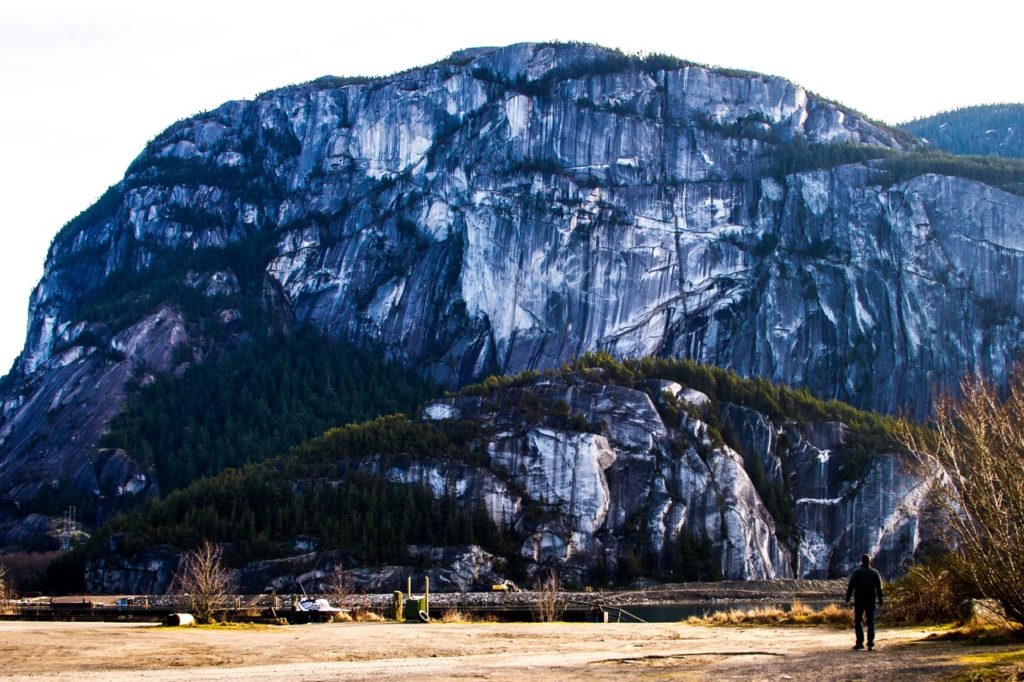
Squamish, sometimes referred to as Yosemite North, has become a world-class rock climbing destination. Almost every style of rock climbing at almost every skill level can be practised here including traditional climbing, sport climbing, aid climbing and bouldering.
What’s frightening is that rather than slowly wearing away, large flakes of granite tend to shear off and drop from the face in layers. Sometimes a flake will partially split away while remaining attached to the rock face. Well, that’s a comfort…
18. Polar Sun Spire, Baffin Island, Canada
Height: 1,300m (4,300ft)
Elevation: 1,438m (4,717ft)
First ascent: 1996, Mark Synnott, Jeff Chapman, Warren Hollinger
The Polar Sun Spire is notable for its stunning 1,300m north face. The team behind the first ascent spent a full month on the mountain and summited after 36 consecutive nights in a portaledge.
It’s been called ‘the mother of all headwalls’ and reputedly features an even larger uninterrupted wallface than Mt Thor though this has not been officially confirmed.
19. Eiger, Switzerland
Height: 1,800m (5,905ft)
Elevation: 3,970m (13,025ft)
First ascent: 1938, Anderl Heckmair, Ludwig Vörg, Heinrich Harrer, Fritz Kasparek (first ascent of the north face)
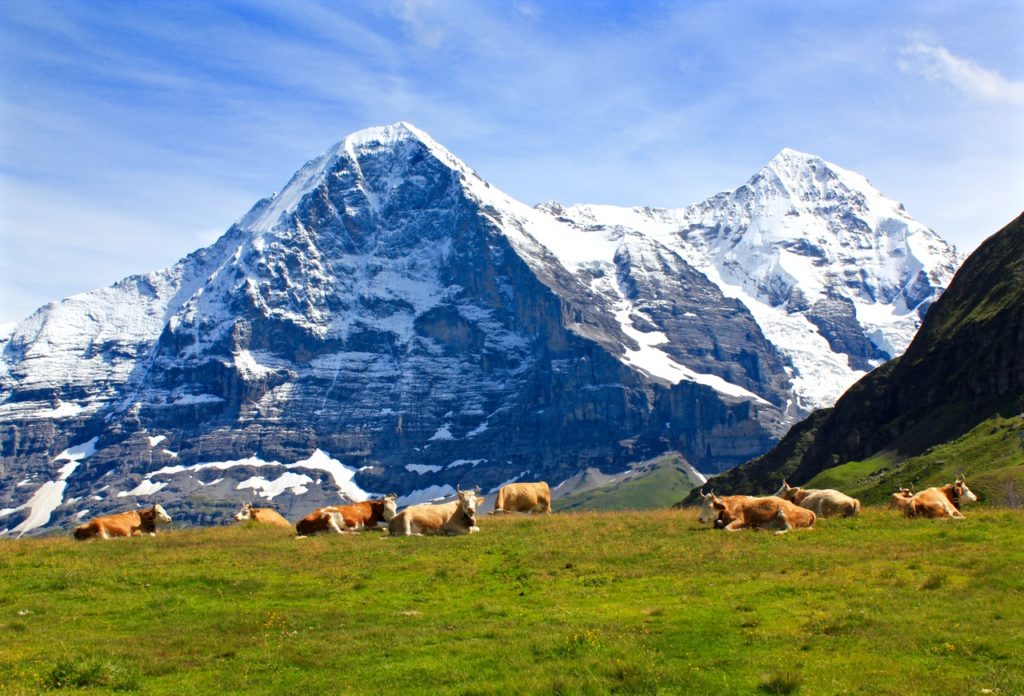
The north face of the Eiger is possibly the most notorious rockface in the world. The combination of extreme weather, risk of avalanche, rock fall, technical climbing and freezing temperatures inspired the nickname Mordwand (‘Murder Wall’ in German) – an apt moniker given that the climb has claimed the lives of over 60 people.
Tellingly, the majority of the big walls in Europe were successfully climbed in the 19th Century – the golden era of Alpinism – but it wasn’t until 1938 that the North Face of the Eiger was successfully scaled.
20. Ketil, Greenland
Height: 1,400m (4,595ft)
Elevation: 2,003m (6,572ft)
First ascent: 1975, Maurice Barrard , Pierre-Henri Feuillet, Yves Payrau, Michel Pelle, Dominique Marchal, Georges Narbaud, Gerard Vellay (west face)
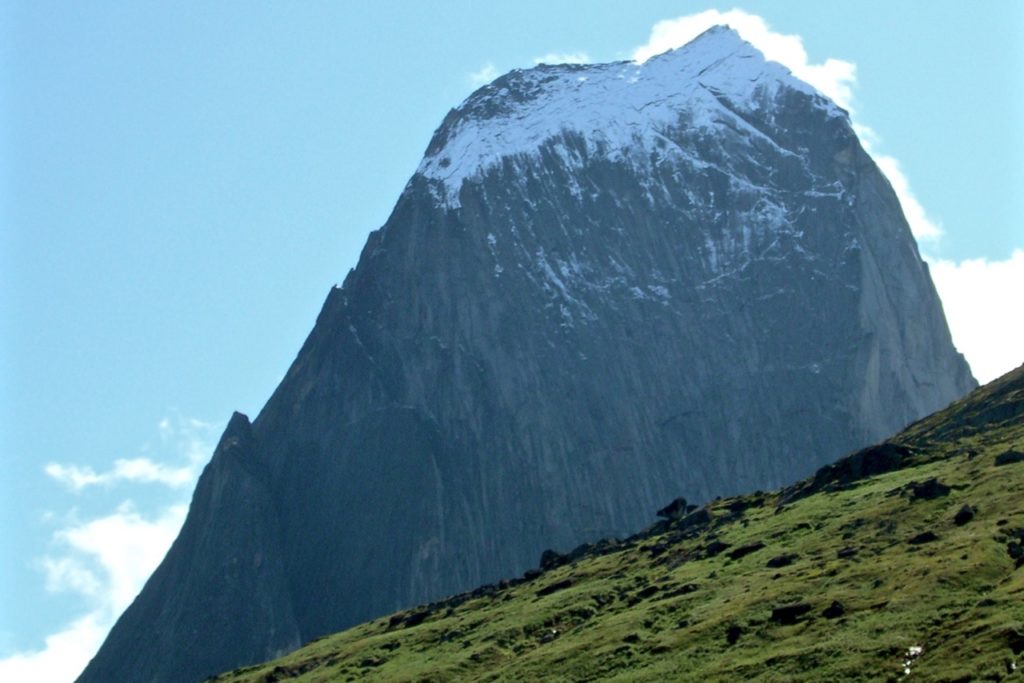
The vast west face of Ketil is another of the world’s biggest near-vertical walls. Located near the southern tip of Greenland, the peak is becoming increasingly popular among the world’s big wall climbers.
Ketil rises above the valley of Klosterdalen which, on the face of it, seems idyllic but is actually a mixture of boot-sucking marshland and thick birch woodland – though you’re likely to have other worries when bivvying on the wall.
Enjoyed this post? pin it for later…
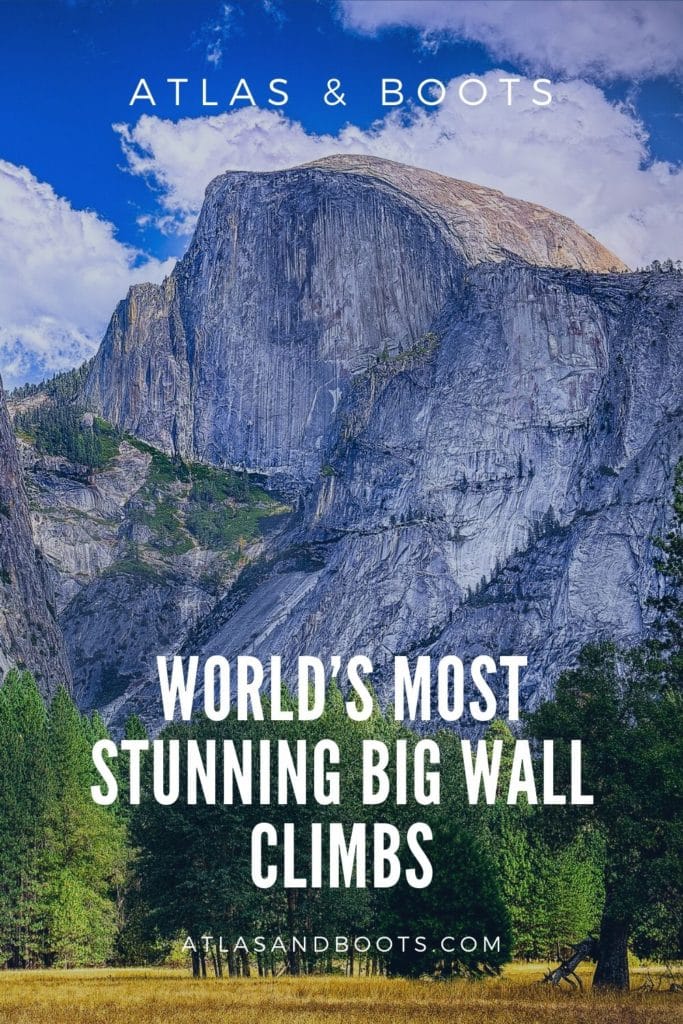
Renowned alpinists Conrad Anker, Jimmy Chin and Renan Ozturk attempt the impossible climb: the Shark’s Fin on Mount Meru, a 21,000-foot peak above the Ganges River in Northern India and the ultimate challenge in the high-stakes world of big-wall climbing.
